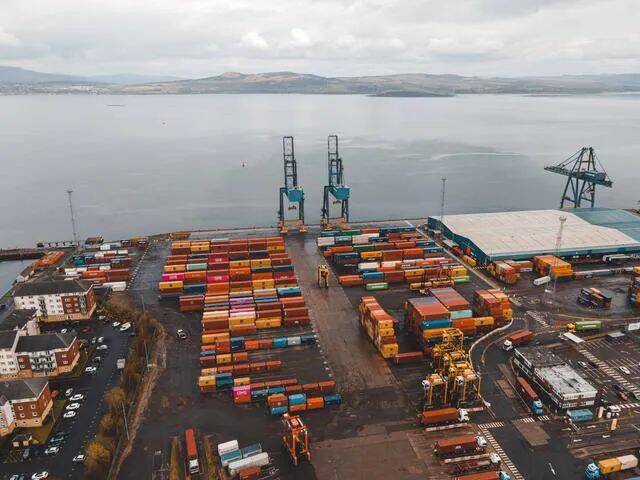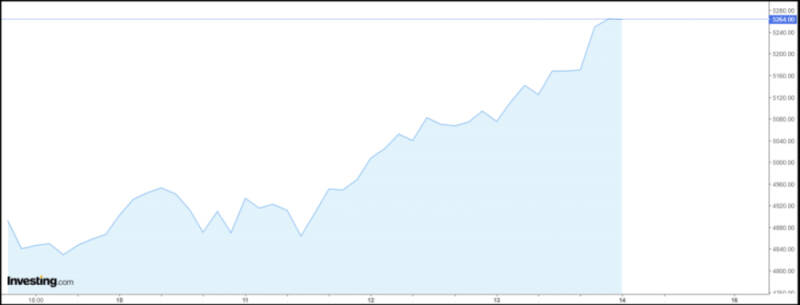Vietnam has been hit by continuous storms! Severe delay in coffee exports at port
Tropical Storm Su Li injured one person, damaged 93 houses, damaged two schools and caused 13 landslides after making landfall in central Vietnam on September 19, according to the Ministry of Agriculture and Rural Development of Vietnam. Many roads were flooded and many industries in Vietnam were seriously affected.
It is reported that the tropical storm made landfall from Quang Pyeong Province to Kwong Chi Province in central Vietnam, with maximum winds of 74 km / h (force 8) and gusts of 10 to 11, bringing heavy rain to many provinces along the coast of Vietnam, and heavy rains caused flooding in many places.
This is the second tropical storm to hit Vietnam in September. Earlier, Vietnam suffered its strongest typhoon Capricorn in 30 years, causing severe flooding, damaging some important transportation routes and disrupting power supply and telecommunications services in several areas. landslides and floods triggered by heavy rains killed at least 127 people, 54 missing and worsened, according to Vietnam's disaster Management Bureau.
According to reports, the worst hit is north-central Vietnam, where flood levels in many counties and cities have reached record highs. Houses and farmland in many communities have been flooded, buildings have been torn apart, bridges have collapsed, and nearly 50,000 houses have been damaged. Farmland and industrial areas were also hit hard by the typhoon, flooding inundated about 162828 hectares of land and 9543 hectares of cash crops in Vietnam, according to Vietnam's disaster management agency. And the floods damaged transmission lines, causing power outages in several areas, forcing many factories to shut down, and some companies said it would take at least a month to resume production.
Vietnam's coffee industry has also been affected, although the two tropical storms that hit Vietnam in September were mainly in the north-central part of Vietnam, with less impact on the central and western provinces of Robusta coffee, such as Dole, Linton, Calais and Kunsong. But these areas are on the edge of the storm, so they are also affected by heavy rainfall.
At the beginning of this year, Vietnam reported a severe drought, and major coffee producing areas in Vietnam issued secondary drought warnings, resulting in a serious reduction in production due to the wilting of water-deficient coffee plants and the yellowing of leaves. It is understood that the harvest period of the coffee season in Vietnam will enter in October every year, and it is currently in the fruit stage, when torrential rain will shoot down some berries and flowers, which will affect coffee production in the new season. At present,
In addition, the storm has had a serious impact on many major ports in Vietnam, blocking coffee exports, the most serious of which are Haiphong Port in northern Vietnam and Da Nang in central Vietnam. In Da Nang, due to its proximity to Guangping Province, it was greatly affected by the storm, and the typhoon finally swept across the coastal port, which also had an impact, with ships unable to go to sea and cargo delayed.

According to reports, part of the infrastructure of the two ports was severely damaged, and some of the main cranes collapsed in the storm, bringing loading and unloading operations to a complete standstill. According to the Vietnamese logistics company, some company warehouses were ravaged by the typhoon and many goods were lost or damaged.
Early in the morning, according to the Vietnam Maritime Safety Bureau, at present, there are more than 8000 container accumulators in the Vietnamese port, ah, the port is unclaimed, the container accumulation port, and the port area space is massively occupied, making it difficult for goods to get in and out and reducing customs clearance sales. The port in Ho Chi Minh City was the most congested, with as many as 5800 containers unpicked up, followed by Haiphong City with 1500 containers and Da Nang City with 186containers, leading to major challenges to Vietnam's coffee supply chain.

Vietnamese coffee exports are mainly in Da Nang and Ho Chi Minh ports, and exports are slow due to the accumulation of these containers. At the same time, due to the reduction in production, the volume of exports decreased significantly. According to the General Administration of Customs of Vietnam, Vietnam exported a total of 1.216 million bags (60 kg / bag) in August, which was higher than the previous forecast of 1.16 million bags, but decreased by 14.1% compared with the same period last year. And since 2023, Vietnam has exported a total of 23441199 bags of coffee, a decrease of 12.71% compared with the same period last year.
At present, Vietnam produces little coffee, but the spot price of domestic coffee is still rising. The price of raw coffee beans in the central highlands is 110 million to 115 million dong / ton. Vietnam, as the second largest coffee producer in the world, will push up international Robusta futures prices at the same time.
For more information about coffee producing areas, please scan the code directly and follow: coffee comments.
Long press the QR code to follow:
TRANSLATE with
XEnglishArabicHebrewPolishBulgarianHindiPortugueseCatalanHmong DawRomanianChinese SimplifiedHungarianRussianChinese TraditionalIndonesianSlovakCzechItalianSlovenianDanishJapaneseSpanishDutchKlingonSwedishEnglishKoreanThaiEstonianLatvianTurkishFinnishLithuanianUkrainianFrenchMalayUrduGermanMalteseVietnameseGreekNorwegianWelshHaitian CreolePersian
TRANSLATE with
COPY THE URL BELOW
BackEMBED THE SNIPPET BELOW IN YOUR SITE Bing Webmaster PortalBack
Important Notice :
前街咖啡 FrontStreet Coffee has moved to new addredd:
FrontStreet Coffee Address: 315,Donghua East Road,GuangZhou
Tel:020 38364473
- Prev

Take off the holster and the Manner cup becomes a "spittoon" in seconds?!
▲ Click to pay attention| Daily Boutique Coffee Culture Magazine Coffee Workshop Recently, many Manner fans discovered that the brand has quietly launched a new "Cup Delivery Package". When blue fans saw that the gift was a navy blue colored ceramic cup, they all saw that it was a ceramic cup with a blue edge. Light up. According to the official publicity map, the ceramic cup is made of ocean blue.
- Next

What coffee producing areas are there in central and western Kenya? What are the characteristics?
African coffee has a very high reputation in the global coffee market. Coffee is mainly grown in East Africa. This is the highest area in Africa. Because it is traversed by the Great Rift Valley of East Africa, it brings many mountains, volcanoes, lava plateaus and lakes along the route., rich in natural resources, so there are many well-known coffee-producing countries
Related
- Being chased out of the rain in front of Starbucks?! Store: Sheltering from rain under umbrellas poses a safety hazard
- The white moonlight has changed?! Lucky launches "Big Winter Pear American"
- Hand-brewed coffee three-stage method, high-sweet and universal brewing method to share! What does the high sweet water level of hand-brewed coffee mean?
- What is the difference between raw, refined and full espresso coffee? How to extract espresso and taste good?
- A complete list of coffee bean names and their meanings! What is Yejia Shefi coffee? Where is Mantelin coffee?
- What grade does Arida Manor Kaduai coffee beans belong to? What treatment is Arida ASD slow anaerobic sun exposure?
- The milk tea cup becomes smaller?! Overlord Tea Girl launches a new "Return to Yunnan" series
- Accused of selling counterfeit and high-priced coffee beans! Well-known boutique coffee brand "Oukelao" bowed and apologized!
- How to make espresso dumplings? Can I eat coffee and glutinous rice balls together?
- Save the unformed and stagnant powder cakes in one second! What is the problem with stagnant water in the powder bowl of the espresso machine?

